An RO System works by passing water through several membranes to remove particulates and contaminants. Contrary to believe that reverse osmosis waste water, the reality is that water isn’t actually “wasted”. Continue reading to learn why.
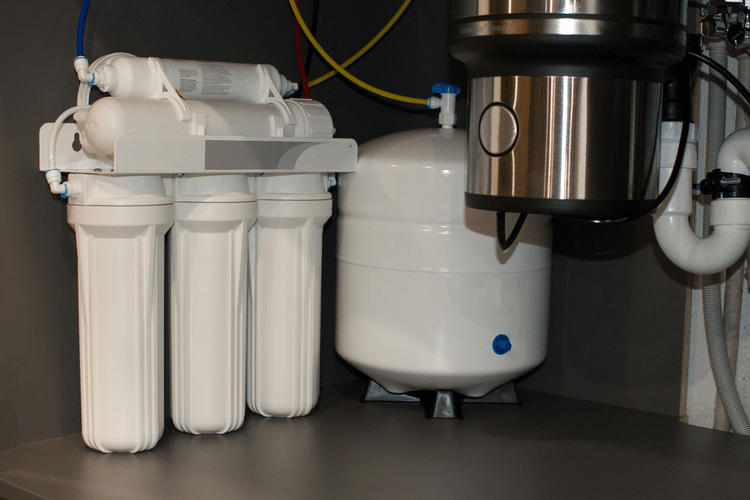
Why Water is Wasted in Reverse Osmosis
In a nutshell, reverse osmosis “wastes” water because the filtered contaminants needs to be flushed away. During cross-flow filtration, water filters through a membrane, which is where all the contaminants are collected. Then, those contaminants get washed away.
In order to do that, perfectly good water ends up going down the drain instead of through your tap.
That said, “wastewater” can be a misleading term in the case of reverse osmosis. To be clear, there’s no question that a poorly-maintained or low-efficiency reverse osmosis system can waste a lot of water. However, that’s a product of a poorly-designed system, not the RO process itself.
Look at it this way. When you wash dirt from your hands, you’re not wasting water just because it’s going down the drain. It’s simply a part of the cleaning process. In order to get your hands clean, you’ll have to “waste” some water.
Reverse osmosis removes contaminants from water, just like washing hands takes away dirt and germs. A well-designed RO system will use as little water as possible to do this. Unfortunately, there’s no way to completely avoid water washing away because that’s simply how the process works.
How Much Water Does Reverse Osmosis Waste?
The average reverse osmosis waste water ratio is 4:1. This means for every gallon of clean water, an RO system can use or waste 3-25 gallons of water.
Considering a running tap puts out anywhere from 1-3 gallons a minute, you’re looking at 9-75 gallons of wasted water for every minute you spend washing dishes.
That said, a well-designed reverse osmosis system doesn’t waste water so much as it uses it. Fortunately, as RO systems become more advanced, you’ll find more and more options for systems that use significantly less water.
How to Reduce Waste Water In an RO System
There are several ways to reduce wastewater from an ro system:
1. Save Your Water
First, extend the reverse osmosis pipe so it deposits wastewater into a tank outside your kitchen. Then, you can use that water for other household things. For example, you can use RO wastewater to:
- Wash your car
- Water your garden or plants
- Mop your floor
- Wash your patio furniture
- Rinse paint brushes
- Clean off muddy shoes
Unfortunately, RO waste water is not ideal for bathing yourself or pets. But you can still use it for anything that doesn’t require clean, potable water.
2. Recycle Your Water
Some RO systems will actually recycle the water for you, eliminating the need for a water tank. Instead, they simply recirculate any discharge water back through the system.
The main thing to remember about this option is that contaminants will build up in the water that recirculates, which could eventually damage your ro membranes.
3. Maintain Your System
As with any system, an RO system needs proper maintenance to function. You’ll need to regularly replace the RO membrane to ensure as much water is getting through as possible. Depending on the model and usage, expect to change filters every 2-3 years for a standard system.
4. Increase Your Water Pressure
Water pressure level directly affects how much water an RO system uses. The ideal water pressure for a reverse osmosis system is 35-40 PSI. Any less than that, and you could end up wasting quite a lot of water. Giving your pressure a bit of a boost can help maximize your system’s efficiency.
RO Systems With The Least Waste Water Ratio
If you’re curious about which RO systems use or waste the least amount of water, here are a few options below. However, For a more comprehensive list of systems with the best overall performance, refer to our article on popular reverse osmosis system reviews.
1. Waterdrop G3
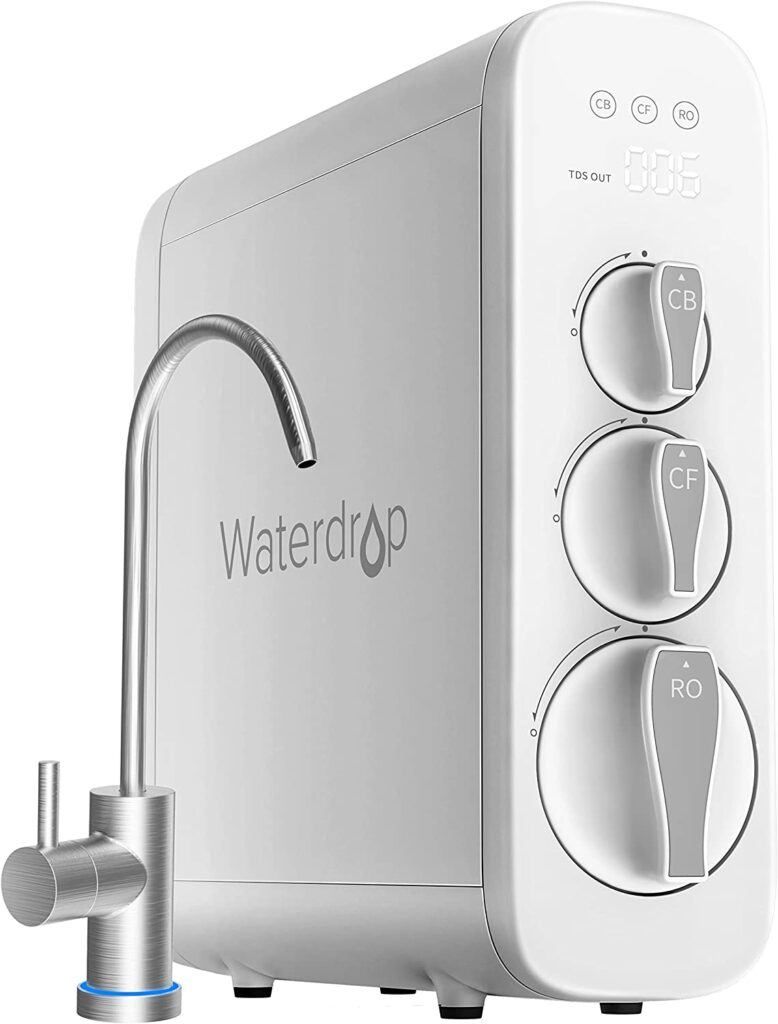
The Waterdrop G3 touts a wastewater ratio of 1:1. In other words, it only uses one gallon of wastewater for each clean gallon it produces.
2. iSpring PH100 Under Sink Reverse Osmosis System
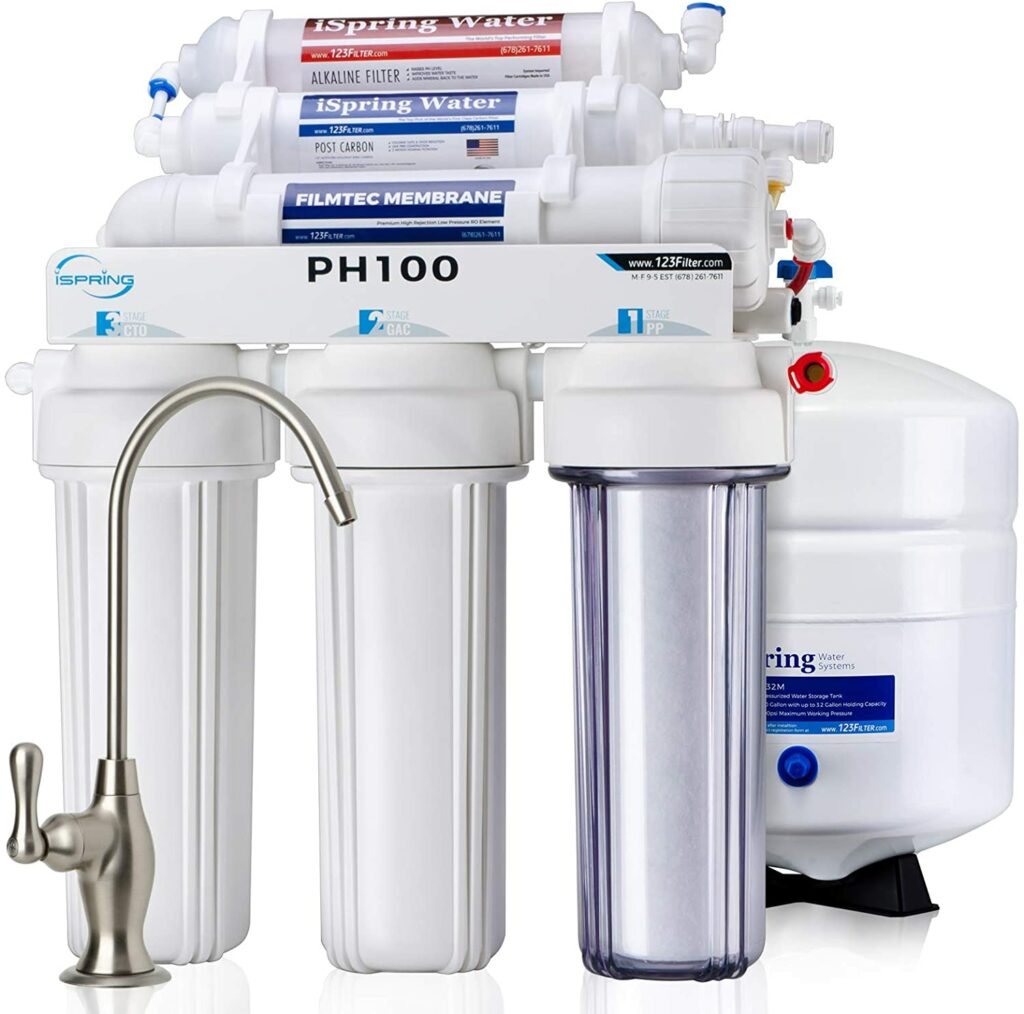
The iSpring PH100 Under Sink system is a high-efficiency RO system that works on a 1:1 wastewater ratio. It removes more than 1,000 different contaminants, including up to 98% of lead. It also has a ⅜” fast flow line that increases your water’s flow through the membranes.
3. Frizzlife PD600 Reverse Osmosis System
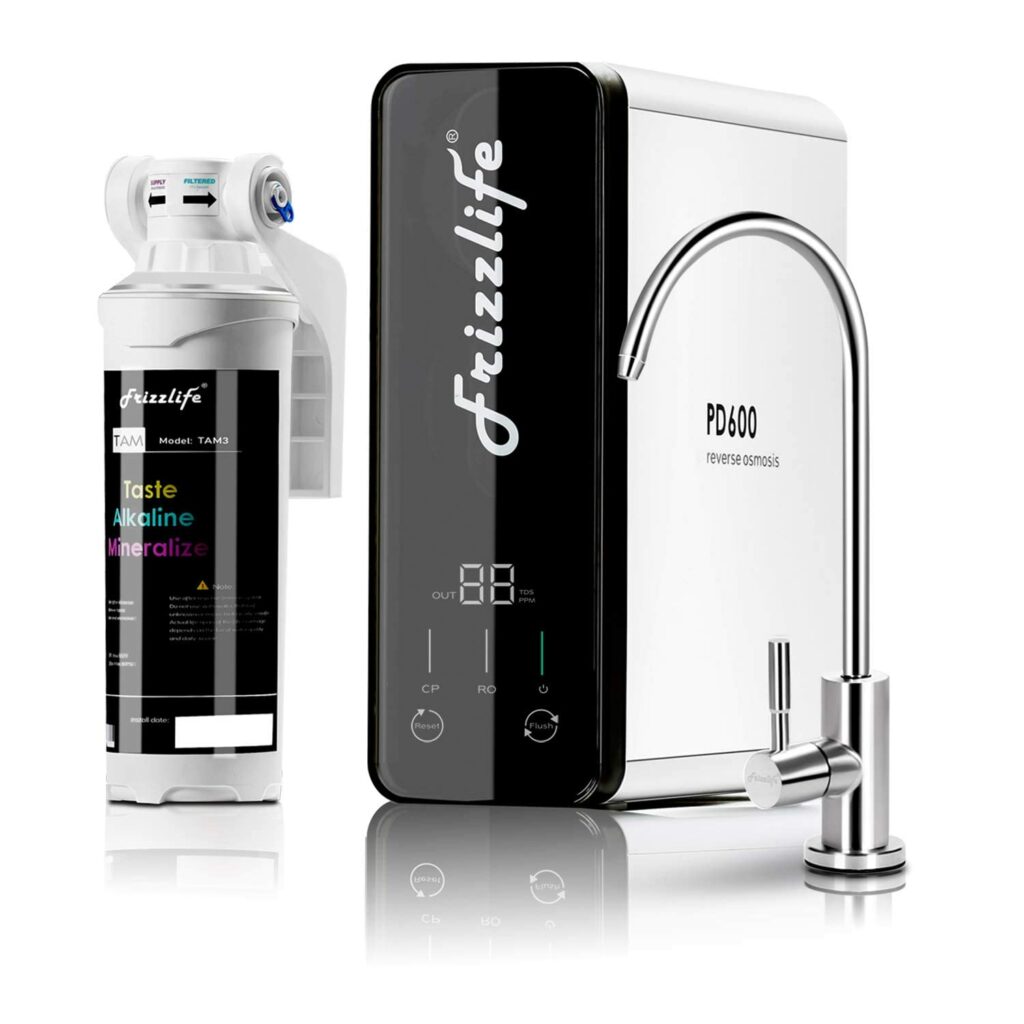
The Frizzlife PD600 provides a wastewater ratio of 1.5:1. While that’s slightly less than others on this list, it’s still incredibly efficient compared to standard RO systems.
4. HomeMaster Artesian Undersink RO System
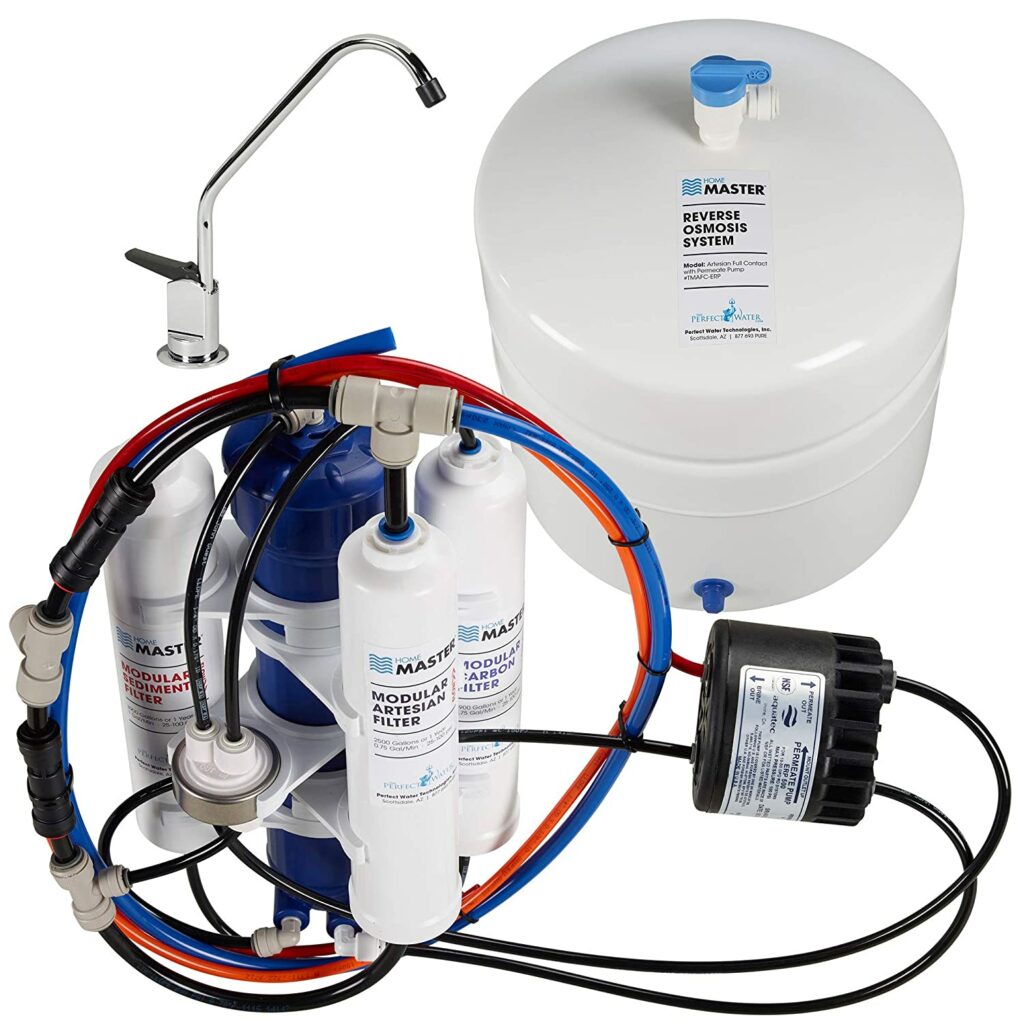
The HomeMaster Artesian Undersink RO System is a high-efficiency system that produces clean remineralized water at a wastewater ratio of 1:1. It doesn’t use any electricity, and it offers a high flow rate that maximizes your system’s water production.
5. NU Aqua Efficiency Series
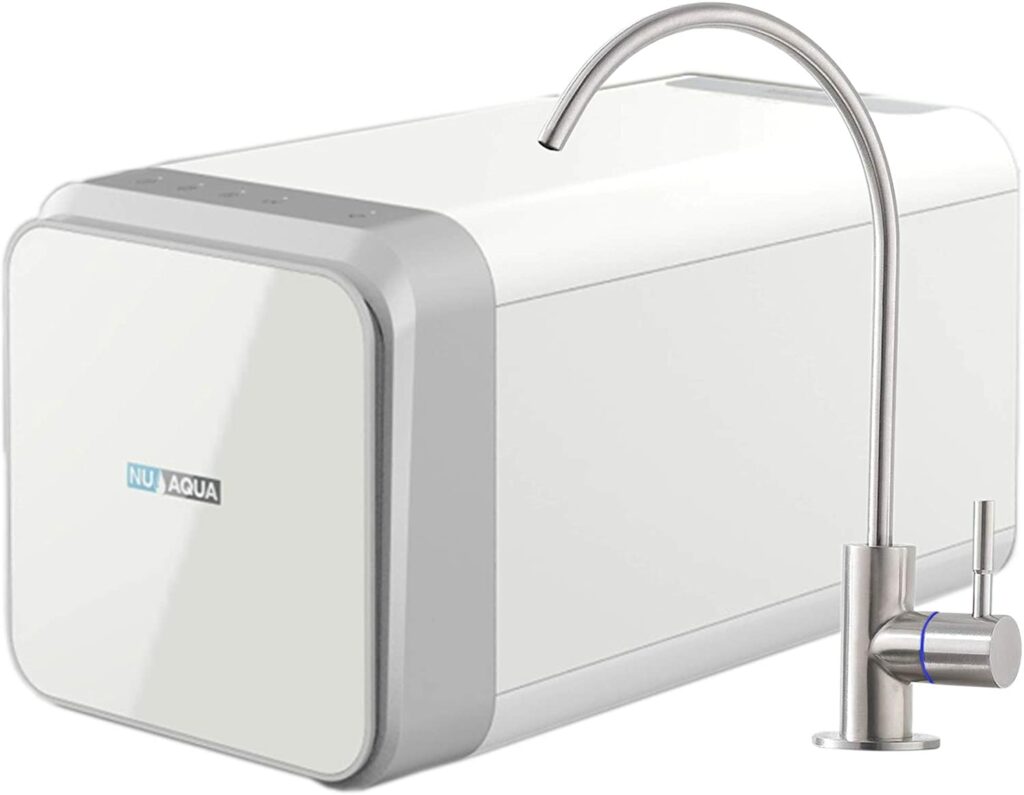
The NU Aqua Efficiency RO system offers a 2:1 wastewater ratio, which means for every 1 gallon of wastewater, you’ll get two gallons of pure water.
One of the most significant benefits of having a reverse osmosis system is that you’ll have cleaner and safer water to drink. Unlike traditional filtration methods, reverse osmosis systems can remove even the smallest contaminants from your water supply, including lead, arsenic, chlorine, and fluoride.
Thank you for this information. It is helpful.
I am looking to buy a reverse osmosis hydrogen water purifier for my prewar New York City apartment. Reverse osmosis, hydrogen gas, over-counter, water waste, durability, minimal maintenance, etc. are significant factors. Unfortunately, my Super is not receptive to me installing an under counter system.
I am looking at the RKIN U1 system. However, I read to be leery of a 1:1 ratio as it tends to accumulate toxins and potentially break the system. Reading everything I can about water purifiers is dizzying. Once I think I have a good idea, conflicting information follows. I am also finding it difficult to discern between truth and the manufacturers sales pitch. Please advise.
Thank you immensely.
Hi Linda, we’ve not yet reviewed the RKIN system you mentioned. We do have comprehensive reviews of the most popular units here in our buying guide & review article. These units that we reviewed and came out on top are highly regarded and should deserve a close look.